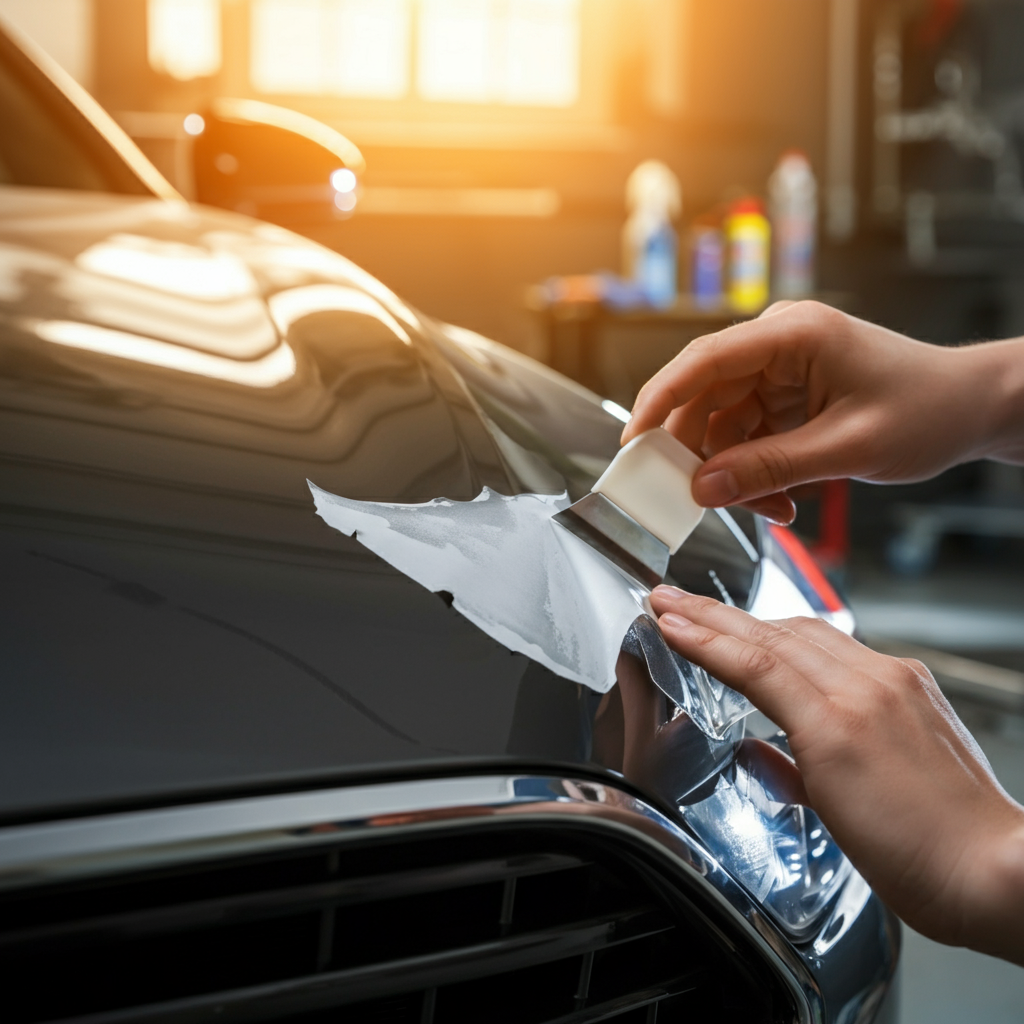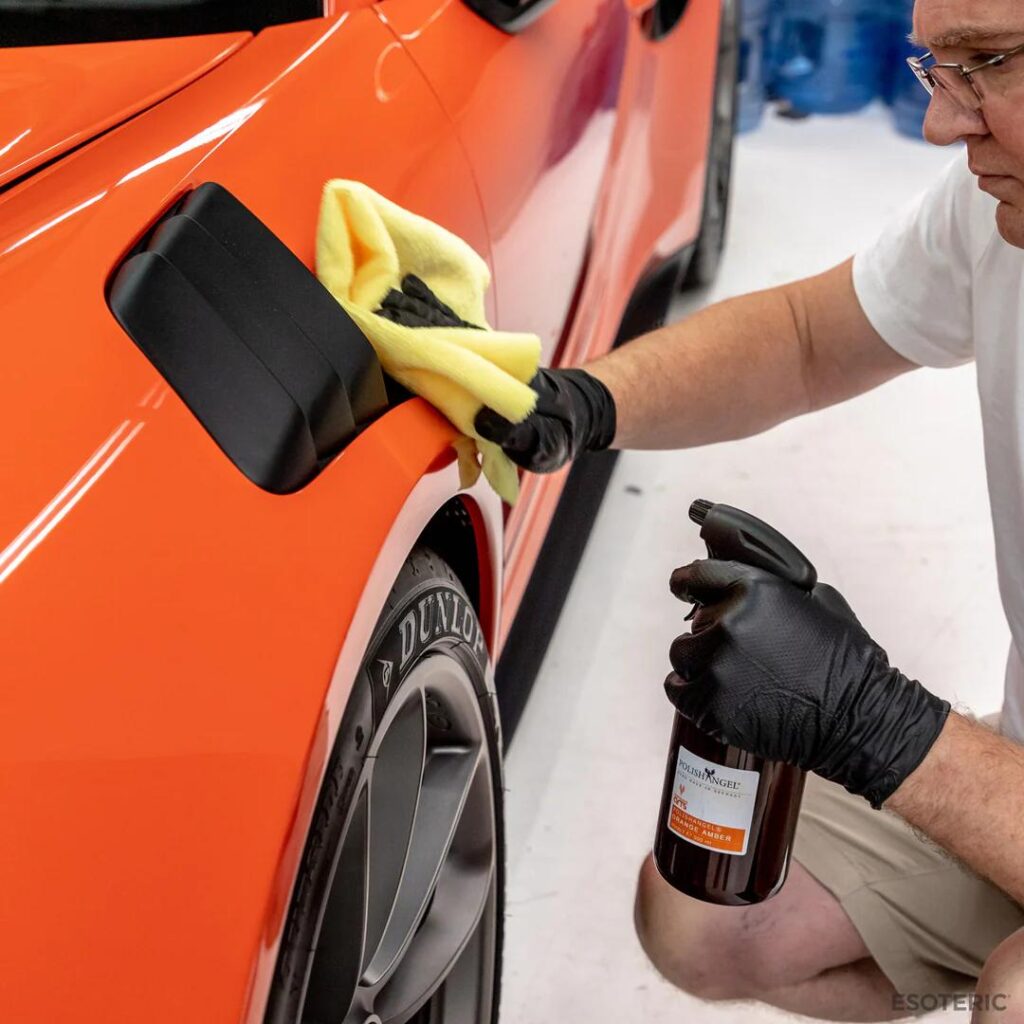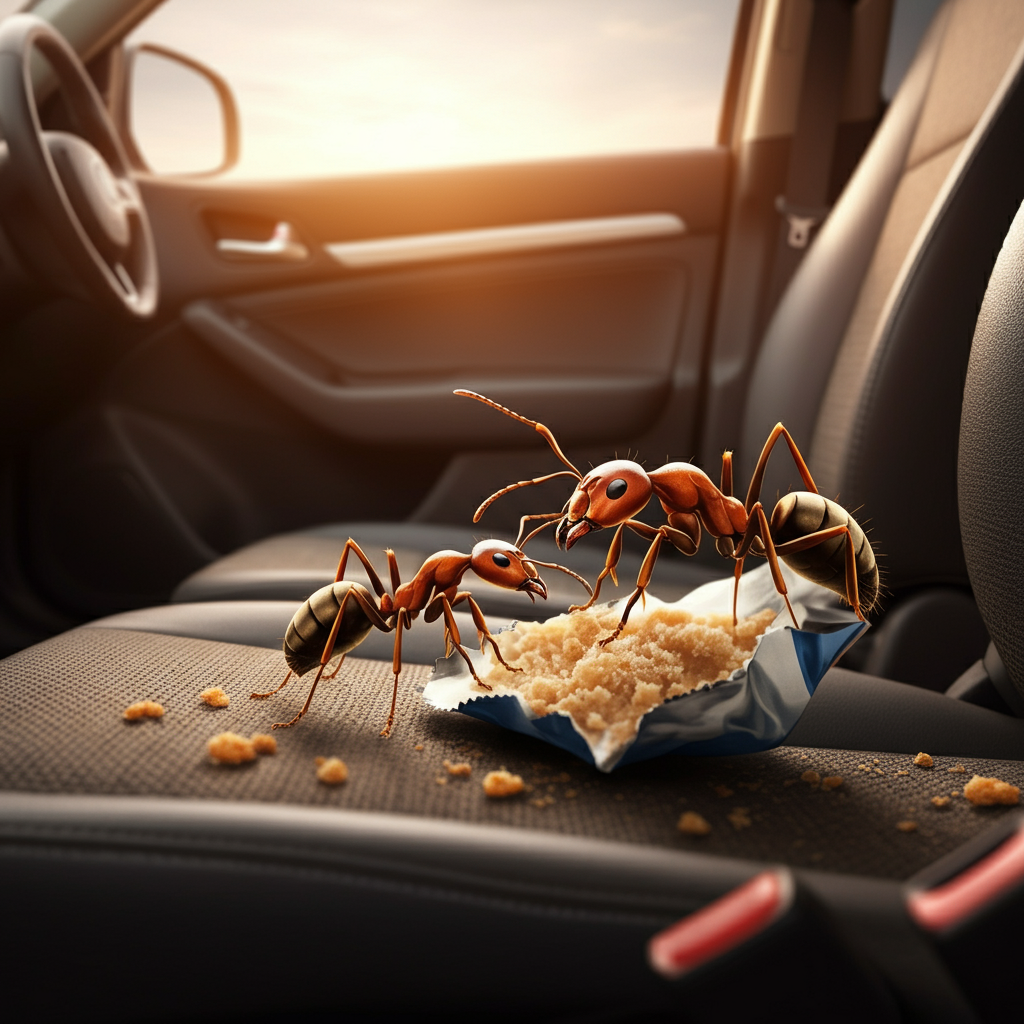As an Amazon Associate, I earn from qualifying purchases
Fix Scratches on Car Paint Nothing ruins the look of your car quite like unsightly scratches across the paintwork. Whether it’s a shopping cart ding in the parking lot, a tree branch scraping along the side, or keys accidentally dragged across the surface, paint scratches are an unfortunate reality of car ownership.
The good news? Most car paint scratches can be fixed at home with the right tools and techniques. You don’t always need to visit an expensive body shop or live with damaged paintwork. With some patience and the proper approach, you can restore your car’s original shine and protect its value.
This comprehensive guide will walk you through everything you need to know about fixing car paint scratches. You’ll learn why scratches occur, how to assess the damage, step-by-step repair methods, and preventive measures to keep your car looking its best. By the end, you’ll have the confidence to tackle most paint scratches yourself and know when it’s time to call in professional help.
Table of Contents
- 1 Why Car Paint Scratches Happen and How They Affect Your Vehicle
- 2 How to Fix Scratches on Car Paint (Step-by-Step Guide)
- 3 Best Products and Tools for Fixing Car Paint Scratches
- 4 How to Prevent Future Scratches on Your Car Paint
- 5 Frequently Asked Questions About Fix Scratches on Car Paint
- 6 Restore Your Car’s Beauty and Value
- 7 Conclusion
Why Car Paint Scratches Happen and How They Affect Your Vehicle
Car paint scratches are more than just cosmetic issues. They can compromise your vehicle’s protective coating and lead to more serious problems if left untreated.

Common Causes of Paint Scratches
Environmental factors cause many paint scratches. Tree branches, bushes, and other vegetation can scrape against your car as you park or drive. Road debris like gravel and small stones kicked up by other vehicles frequently chip and scratch paint surfaces.
Parking lots present numerous hazards. Shopping carts, car doors from adjacent vehicles, and careless pedestrians with bags or sharp objects can all leave marks. Even washing your car incorrectly can create fine scratches known as swirl marks.
Weather conditions also play a role. Hail storms can create multiple small dents and scratches. Sand and dirt particles blown by strong winds act like sandpaper against your paint. Ice scrapers used too aggressively during winter months often leave scratches on painted surfaces.
Understanding Paint Layers
Modern car paint consists of several layers, each serving a specific purpose. The primer provides adhesion and corrosion resistance. The base coat contains the actual color pigments. The clear coat acts as a protective barrier against UV rays, chemicals, and minor impacts.
Most minor scratches only affect the clear coat, making them relatively easy to repair. Deeper scratches that penetrate the base coat require more extensive work. Scratches that reach the primer or metal beneath need immediate attention to prevent rust formation.
Long-Term Effects of Untreated Scratches
Ignoring paint scratches can lead to expensive problems. Water and moisture can penetrate through scratches, causing rust to develop underneath the paint. This rust spreads outward, eventually requiring panel replacement or extensive bodywork.
Scratches also diminish your car’s resale value. Potential buyers notice paint damage immediately, and it signals poor maintenance. Even minor scratches can reduce your vehicle’s worth by hundreds of dollars.
UV rays can cause additional damage through exposed scratches. Without the protective clear coat, the underlying paint layers become vulnerable to fading and oxidation.
How to Fix Scratches on Car Paint (Step-by-Step Guide)
Before starting any repair work, you need to assess the scratch depth and gather the appropriate materials. The repair method depends on how deep the scratch penetrates through the paint layers.
Assessing Scratch Depth
The fingernail test provides a quick way to gauge scratch severity. Run your fingernail gently across the scratch. If your nail catches on the scratch, it likely goes through the clear coat and into the base coat or deeper. Smooth scratches that don’t catch your fingernail are typically surface-level clear coat scratches.
Surface scratches appear as fine lines that don’t disrupt the paint color. These are the easiest to fix and respond well to polishing compounds. Deep scratches show the underlying paint color or even primer/metal. These require touch-up paint and more extensive repair work.
Preparing Your Workspace
Choose a shaded area away from direct sunlight for your repair work. Hot surfaces make products difficult to work with and can cause uneven results. Ensure the car surface is cool to the touch before beginning.
Wash the entire car thoroughly, paying special attention to the scratched area. Remove all dirt, grime, and wax buildup that could interfere with the repair process. Use a clay bar to remove embedded contaminants if necessary.
Dry the car completely with clean microfiber towels. Any remaining moisture can prevent proper adhesion of repair products.
Fixing Surface Scratches
Surface scratches respond well to polishing compounds and buffing. Start with the gentlest method first.
Apply a small amount of polishing compound to a microfiber cloth. Work the compound into the scratch using circular motions, applying moderate pressure. The abrasives in the compound will gradually remove the damaged clear coat layer.
Continue buffing for 30-60 seconds, then wipe clean with a fresh microfiber cloth. Examine the results under good lighting. You may need to repeat the process several times for complete removal.
For stubborn surface scratches, try using 2000-grit wet sandpaper. Wet the sandpaper and gently sand the scratch in one direction, not in circles. This removes the damaged clear coat more aggressively. Follow immediately with polishing compound to restore the surface smoothness.
Repairing Deep Scratches
Deep scratches that penetrate the base coat require touch-up paint. Start by cleaning the scratch thoroughly with rubbing alcohol to remove any oils or contaminants.
Apply a thin layer of touch-up paint using the brush provided or a fine-tip applicator. Fill the scratch completely but avoid building up excess paint above the surrounding surface. Allow the paint to dry completely according to the manufacturer’s instructions.
Once dry, wet sand the area gently with 1500-grit sandpaper to level the repair with the surrounding paint. Progress to 2000-grit paper for smoothness. Apply polishing compound to restore the surface shine.
For scratches that reach the primer or metal, apply primer first. Let it dry completely before adding the color coat. This prevents rust formation and ensures proper paint adhesion.
Final Polishing and Protection
After completing the scratch repair, polish the entire panel to blend the repair area with the surrounding paint. Use a high-quality car polish and work in small sections.
Apply a coat of car wax or paint sealant to protect your repair work. This adds a protective barrier against future damage and enhances the overall appearance.
Best Products and Tools for Fixing Car Paint Scratches
Having the right products and tools makes scratch repair much easier and more effective. Quality materials produce better results and help prevent additional damage during the repair process.
Polishing Compounds
Choose polishing compounds based on scratch severity. Fine compounds work well for light scratches and swirl marks. These contain very mild abrasives that remove minimal clear coat material.
Medium-cut compounds handle moderate scratches that catch your fingernail slightly. Heavy-cut compounds tackle deeper clear coat scratches but should be used sparingly to avoid removing too much material.
Popular brands include Meguiar’s ScratchX, Chemical Guys VSS, and Mothers California Gold. These products balance cutting power with ease of use for DIY repairs.
Touch-Up Paint
Obtain touch-up paint that exactly matches your car’s color code. This code appears on a sticker inside the driver’s door jamb or in the owner’s manual. Generic colors rarely provide acceptable matches.
OEM touch-up paint from your car’s manufacturer offers the best color match. Aftermarket options like Dupli-Color and SEM provide good alternatives at lower costs.
Touch-up paint comes in various forms. Brush applicators work well for small scratches. Paint pens offer more precision for tiny chips. Spray cans cover larger areas but require masking to prevent overspray.
Sandpaper and Abrasives
Keep various grits of wet sandpaper on hand for different repair stages. 1500-grit removes paint buildup and levels repairs. 2000-grit provides final smoothing before polishing. 3000-grit creates ultra-smooth finishes.
Sanding blocks help maintain even pressure and prevent finger marks. Use plenty of water when wet sanding to prevent scratching and remove debris.
Application Tools
Microfiber cloths are essential for applying and removing products without creating new scratches. Use separate cloths for different steps to avoid cross-contamination.
Foam applicator pads work well for applying polishing compounds evenly. Cotton swabs provide precision for small touch-up jobs.
A dual-action polisher speeds up the polishing process for larger areas. These tools reduce fatigue and produce more consistent results than hand polishing.
Protective Products
Quality car wax protects repaired areas from future damage. Carnauba waxes provide deep shine but require frequent reapplication. Synthetic waxes last longer and offer superior protection.
Paint sealants offer even longer protection than waxes. These synthetic products can protect for six months or more with proper application.
Ceramic coatings provide the ultimate protection but require careful application and higher costs. Professional installation often produces the best results.
How to Prevent Future Scratches on Your Car Paint
Prevention is always easier and less expensive than repair. Simple changes to your car care routine and parking habits can dramatically reduce scratch occurrences.
Proper Washing Techniques
The two-bucket wash method prevents most wash-induced scratches. Fill one bucket with soapy water and another with clean rinse water. Rinse your wash mitt in the clean water before reloading with soap.
Always wash from top to bottom, allowing gravity to carry dirt downward. This prevents dragging contaminants across clean surfaces.
Use the straight-line method instead of circular motions when washing. Straight scratches are less visible than circular swirl marks if contamination does occur.
Protective Measures
Car covers provide excellent protection when parking for extended periods. Choose breathable materials that won’t trap moisture. Ensure the car is clean before covering to prevent scratches from trapped dirt.
Paint protection film offers invisible protection for high-impact areas. These clear films absorb impacts that would otherwise scratch the paint. Professional installation ensures proper coverage and appearance.
Regular waxing creates a sacrificial layer that absorbs minor impacts. Maintain wax protection every 2-3 months for optimal results.
Smart Parking Strategies
Park away from high-traffic areas when possible. The extra walk is worth avoiding door dings and cart impacts.
Avoid parking under trees, especially during fruit-bearing seasons. Falling branches, sap, and bird droppings all threaten paint surfaces.
Use parking sensors or backup cameras to avoid brushing against obstacles. These technologies prevent many backing scratches.
Seasonal Considerations
Winter brings unique challenges like ice scrapers and salt. Use plastic scrapers instead of metal ones, and clear snow before it turns to ice.
Spring and summer require attention to tree sap and insect impacts. Clean these contaminants quickly before they bond to the paint surface.
Fall brings leaves and branches. Park in garages or covered areas during heavy wind storms when possible.
Frequently Asked Questions About Fix Scratches on Car Paint
Can car scratches be repaired without professional help?
Most minor to moderate scratches can be successfully repaired at home with the right products and techniques. Surface-level scratches that only affect the clear coat respond particularly well to DIY methods using polishing compounds and buffing.
However, deep scratches that expose metal or cover large areas often require professional attention. Body shops have specialized equipment and expertise to handle complex repairs that maintain factory-quality appearance.
How long does it take to fix scratches on car paint?
Repair time varies significantly based on scratch severity and your experience level. Simple surface scratches might take 15-30 minutes to polish out. Deep scratches requiring touch-up paint can take several hours when including drying time between coats.
Plan for multiple sessions when dealing with extensive damage. Rushing the process often leads to poor results that require additional work.
Can I fix deep scratches on my car paint at home?
Deep scratches can be repaired at home, but success depends on your skill level and the specific damage. Scratches that reach the base coat but not the primer often respond well to careful touch-up paint application followed by polishing.
Scratches exposing primer or metal require more advanced techniques including primer application. Consider professional help for scratches longer than a few inches or those in highly visible areas.
Is it worth getting a professional to fix car paint scratches?
Professional repair makes sense for valuable vehicles, extensive damage, or when DIY attempts haven’t produced satisfactory results. Body shops can perfectly match paint colors and achieve factory-quality finishes.
For newer or expensive cars, professional repair protects resale value better than visible DIY attempts. Get estimates from multiple shops to compare costs against the vehicle’s value.
How can I protect my car’s paint after repairing scratches?
Apply a quality wax or paint sealant immediately after completing scratch repairs. This protective layer shields the fresh work from UV rays, contaminants, and minor impacts.
Consider upgrading to ceramic coating for long-term protection. While more expensive initially, ceramic coatings provide years of protection and reduce future maintenance needs.
Regular maintenance including gentle washing and prompt removal of contaminants helps preserve both original and repaired paint areas.
Restore Your Car’s Beauty and Value
Fixing car paint scratches doesn’t have to be intimidating or expensive. With the right approach, most scratches can be successfully repaired at home, saving you money while maintaining your vehicle’s appearance and value.Start with proper assessment to choose the correct repair method. Take your time with preparation and follow the techniques outlined in this guide. Remember that practice improAn error occurred during generation. Please try again or contact support if it continues.
Conclusion
Taking care of your car’s paint is essential for preserving its beauty, value, and longevity. By addressing scratches promptly and utilizing proper repair methods, you can keep your vehicle looking its best for years to come. Whether you choose to repair scratches yourself or seek professional help, investing time and effort into maintaining the paintwork ensures your car remains a source of pride and satisfaction.
As an Amazon Associate, I earn from qualifying purchases


